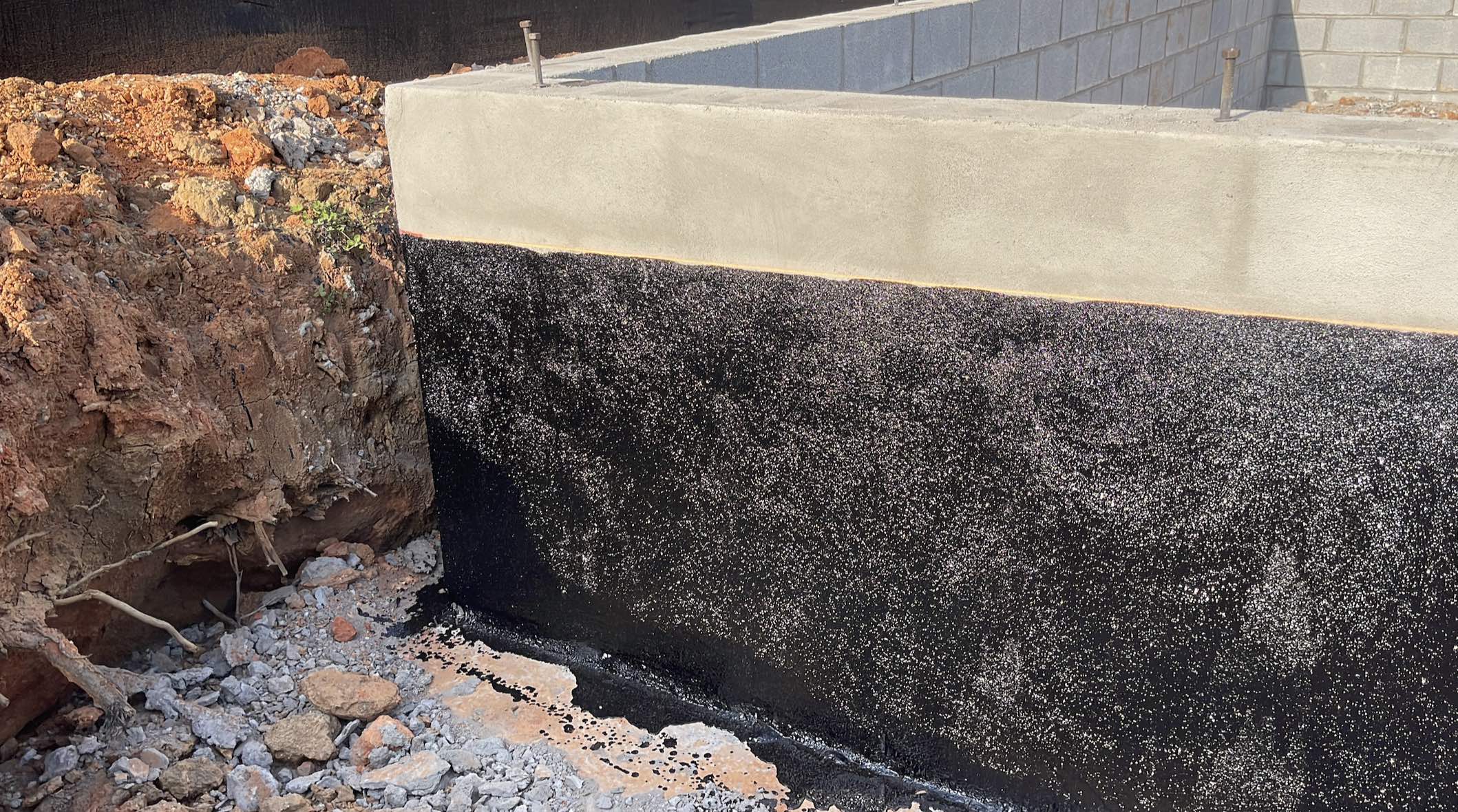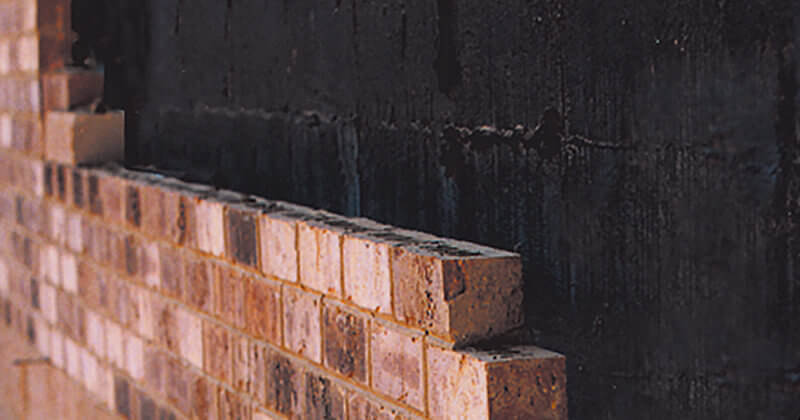Avoid costly repairs with proactive damp removal newcastle
Wiki Article
Discovering the Various Strategies and Solutions for Effective Damp Proofing
Moisture in structures poses significant difficulties to both architectural honesty and interior air top quality. Various techniques and options have actually arised to battle this prevalent concern. From conventional damp-proof membrane layers to cutting-edge chemical therapies, each approach supplies unique advantages. Understanding these alternatives is important for reliable dampness control. Nonetheless, picking the right service depends upon certain building conditions and needs, motivating additional expedition right into the most reliable damp proofing strategies readily available.Understanding the Causes of Wetness
Although moisture can arise from various resources, comprehending these reasons is crucial for efficient remediation. Generally, wetness originates from 3 primary resources: increasing damp, permeating wet, and condensation. Rising wet occurs when groundwater travels upwards through permeable materials, such as brick or stone, frequently because of an absence of a reliable barrier (damp specialist newcastle). Passing through moist is usually brought on by exterior variables, including roofing system leaks, malfunctioning rain gutters, or damaged wall surfaces, allowing water to penetrate a home. Condensation, on the other hand, arises from excess wetness airborne, frequently aggravated by inadequate ventilation and temperature level distinctions, resulting in water droplets creating on surface areas. Determining these underlying concerns is crucial, as each kind of moisture requires a tailored method for removal. Correct assessment helps in determining the most efficient remedies, inevitably safeguarding the structural integrity of a structure and enhancing indoor air high qualityStandard Damp-Proof Membrane Layers

Chemical Damp-Proofing Solutions
Chemical damp-proofing solutions use an ingenious approach to stopping moisture invasion in structures. These methods commonly involve the application of fluid chemicals that permeate masonry and develop an obstacle versus increasing moist. Typically used chemicals consist of silanes, siloxanes, and various other water-repellent agents that react with surface products to produce a hydrophobic layer.The application process usually calls for boring openings right into the walls, infusing the chemical remedy, and allowing it to treat. This approach is particularly helpful for older frameworks where traditional damp-proof membranes may be unwise. Furthermore, chemical damp-proofing can be much less disruptive and much more cost-efficient than comprehensive renovation projects.While effective, these solutions depend upon correct application and environmental problems for peak performance. Regular maintenance and monitoring are important to guarantee the longevity of the damp-proofing therapy. Generally, chemical damp-proofing stands for a flexible choice for guarding buildings against moisture-related damagesDental Caries Wall Surface Building And Construction Strategies
Tooth cavity wall building and construction methods provide numerous benefits, especially in moisture control and power effectiveness. By incorporating an air void between two layers of stonework, these walls effectively minimize water ingress while boosting insulation. This mix not only shields structures from dampness however additionally adds to decreased power consumption.Advantages of Cavity Wall Surfaces
When thinking about reliable moist proofing methods, the benefits of cavity walls stand out prominently. Dental caries walls contain two separate layers, developing an air void that successfully minimizes moisture infiltration. This design lessens the threat of dampness, as the external wall surface functions as an obstacle against rain and water ingress. Additionally, tooth cavity wall surfaces enhance thermal insulation, which adds to power efficiency by minimizing warmth loss. They also offer audio insulation, aiding to create a quieter indoor environment. The air space allows for ventilation, which helps in dampness control and reduces the chance of mold and mildew growth. These benefits not only improve the overall comfort of a building however likewise add to its long life and structural honesty.Dampness Control Strategies
Effective dampness control strategies are essential in dental caries wall building to assure long-lasting defense against wetness. One main method entails the incorporation of weep openings, which help with water drain from the cavity, protecting against accumulation. Furthermore, using breathable membrane layers can help handle dampness levels while enabling entraped vapor to leave. Correct placement of insulation is additionally vital, as it needs to not obstruct drain courses. Making sure that the external leaves of the dental caries wall surface are constructed with water-resistant materials improves total durability. Routine upkeep checks are vital to determine any kind of obstructions or damage early, safeguarding the framework's stability. Ultimately, a combination of these methods creates a robust protection versus wetness invasion in cavity walls.
Insulation and Power Efficiency
Insulation plays an essential duty in improving energy effectiveness within tooth cavity wall building. By integrating protecting products, these walls produce a thermal barrier that minimizes warmth loss and decreases power usage. Efficient insulation not just helps keep a secure interior temperature however also reduces the risk of moisture, as it avoids condensation within the wall tooth cavity. Various techniques, such as making use of inflexible foam boards or mineral woollen, can be utilized to attain perfect insulation performance. Additionally, proper installment is necessary to guarantee that voids and gaps are reduced, which can otherwise compromise power performance. Eventually, a well-insulated tooth cavity wall contributes significantly to general sustainability and lowers heating & cooling prices for home owners.External Damp Proofing Techniques
External wet proofing methods are important for shielding structures from dampness seepage. Two efficient techniques consist of the application of water resistant membranes and the installment of French drains pipes. These solutions assist mitigate water buildup and maintain the stability of structures.Waterproof Membrane Application
While different approaches exist for stopping moisture access, the application of waterproof membranes stays a very effective outside wet proofing technique. These membranes are normally made from materials such as polyethylene, rubber, or modified bitumen, supplying a durable barrier versus water penetration. The installation procedure involves applying the membrane layer to the outside surface areas of walls or foundations, making certain complete protection to avoid leaks. Appropriate adhesion and securing at joints are essential to taking full advantage of effectiveness. Waterproof membranes can be applied in various types, consisting of liquid coverings and sheet membrane layers, enabling flexibility based on the particular requirements of the framework. This approach not just shields structures from wetness yet likewise improves their durability and architectural honesty.French Drainpipe Installment
One efficient technique for handling groundwater and protecting against dampness build-up around a building's structure is the installment of a French drainpipe. This water drainage system is composed of a trench full of crushed rock and a perforated pipe that reroutes surface area water far from the foundation. Correct setup needs cautious preparation, making certain that the drainpipe inclines away from the structure to facilitate perfect water flow. In addition, the place of the drainpipe is essential; it ought to be positioned in locations susceptible to pooling or excess dampness. Regular upkeep, including clearing up debris from the gravel and making sure the pipeline stays unblocked, is important for long-term effectiveness. Ultimately, a well-installed French drainpipe can greatly lower the risk of water-related problems in cellars and structures.Inside Waterproofing Methods
Inside waterproofing methods are vital for safeguarding a building's inside from wetness seepage and potential water damage. These strategies normally include the application of customized materials and methods created to develop a wetness obstacle within the framework. One typical approach is using waterproof finishings or sealers on wall surfaces and floorings, which prevent wetness from permeating surfaces.Additionally, mounting indoor water drainage systems, such as sump pumps, can efficiently handle water buildup in cellars and creep spaces. Another technique includes making use of vapor barriers, which are mounted to hinder wetness activity from the ground into living spaces.Moreover, dealing with any kind of fractures or gaps in wall surfaces or structures with appropriate sealers assures a thorough protection versus water intrusion. By executing these indoor waterproofing strategies, property proprietors can considerably reduce the danger of mold and mildew development, architectural damage, and various other moisture-related issues. Appropriate implementation of these methods is essential for long-term defense and building integrity.Normal Upkeep and Examination Practices
Regular maintenance and assessment practices are crucial for ensuring the long-term efficiency of moist proofing services in any type of building. Regular checks allow homeowner to determine early indicators website of wetness intrusion, such as peeling off paint, mold growth, and mildewy odors. These indications can indicate underlying concerns that need prompt attention.Inspections need to be performed at the very least every year, focusing on prone areas like cellars, crawl rooms, and exterior walls. Throughout these evaluations, building owners need to analyze sealers, drainage systems, and air flow to verify they work correctly.Additionally, maintaining downspouts and gutters is crucial, as blocked systems can cause water buildup near the foundation. Carrying out a normal maintenance routine, along with prompt repair work, can significantly expand the lifespan of damp proofing procedures and shield the architectural integrity of the building. Proactive procedures inevitably add to the general health and wellness of the living environment.Frequently Asked Concerns
The Length Of Time Does Damp Proofing Commonly Last?
The period of wet proofing performance differs, typically lasting between 20 to 50 years. Factors such as application quality, environmental problems, and upkeep methods greatly affect the durability of the wet proofing therapy.
Can I Damp Proof My Home Myself?
The specific pondered the feasibility of DIY damp proofing. With appropriate research study and the right products, it is possible. They likewise acknowledged the significance of expert guidance to guarantee durable efficiency and stop future problems.What Are the Signs of Inadequate Damp Proofing?
Signs of inadequate moist proofing consist of consistent mildewy odors, visible mold development, peeling off paint, moist patches on wall surfaces, and wood degeneration - damp removal newcastle. Property owners should deal with these issues promptly to prevent additional damages and health and wellness problemsDoes Damp Proofing Affect Indoor Air Quality?

Just How Much Does Expert Damp Proofing Cost?
Expert wet proofing prices vary substantially, typically ranging from $1,000 to $5,000 depending upon the property's dimension, the degree of the damp concern, and selected approaches. Each scenario needs a tailored evaluation for accurate prices. Generally, moisture stems from 3 key sources: increasing moist, passing through moist, and condensation. When thinking about reliable moist proofing methods, the benefits of cavity walls stand out plainly. Outside damp proofing techniques are vital for shielding frameworks from moisture seepage. While numerous techniques exist for protecting against dampness access, the application of water resistant membrane layers continues to be a very effective outside damp proofing technique. Indications of ineffective wet proofing include consistent stuffy smells, noticeable mold and mildew growth, peeling off paint, damp patches on walls, and timber decay.Report this wiki page